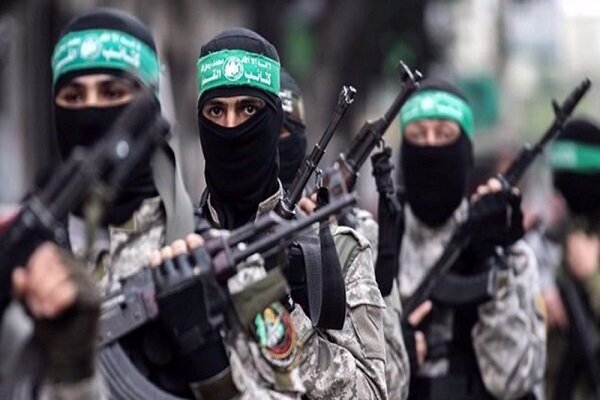Gaza resistance forces destroy Israeli tanks
Occupation troops reportedly frustrated with ongoing war

TEHRAN- The Palestinian resistance fighters continue to attack the Israeli military, which is said to be displaying signs of fatigue and frustration.
The armed wing of Hamas, the al-Qassam Brigades, detonated a rocket from remnants left by the Israeli military, targeting “two enemy Merkava tanks in the Tel al-Hawa neighborhood” in the southwest of Gaza City.
According to a statement published by the al-Qassam Brigades, Israeli occupation forces (IOF) were present near the tanks at the time of the explosions, which “killed and injured” some occupation troops.
Meanwhile, the al-Quds Brigades, the armed wing of Palestinian Islamic Jihad, targeted an Israeli military position and vehicles in the “Netzarim Corridor” in the southwest of Gaza City, using mortar shells.
The “Netzarim Corridor” was built by the IOF after the genocide began in Gaza. The route stretches 6.5 kilometers from an Israeli settlement in the Gaza envelope to the Mediterranean Sea, allowing the IOF to carry out military raids in northern and southern parts of the Strip.
But the construction and buildup of IOF troops and tanks in the corridor have made the route, which split the Gaza Strip in half, a prime target for the resistance fighters to attack Israeli forces over the past months.
The latest operations add to others carried out by the resistance movement in Gaza against Israeli forces as part of ongoing efforts to prevent the besieged territory from occupation.
In southern Gaza, clashes intensified inside the Yabna camp in Rafah, with fierce battles reaching as far as Khan Younis, according to regional reporters on the ground.
Palestinian news outlets reported rocket barrages from Gaza towards settlements near the enclave, while Israeli media mentioned sirens sounding at Kerem Abu Salem.
Hebrew media also reported a helicopter landing at the Ein Karem hospital with injured Israeli soldiers and an infiltration into the city of Eilat from the sea.
As the IOF faces escalating problems, nearly ten months after Tel Aviv waged a war that has failed to achieve any of its declared objectives, Israeli media noted that many officers and soldiers in unit 8200, the largest IOF unit, are speaking about “an atmosphere of paralysis with doubts about officials and mutual accusations”.
Israeli media also stated that there is “frustration in the army as a result of [internal] investigations over the war’s failures”.
According to experts in matters related to the Palestinian resistance movement, this frustration indicates Israeli fears of officially declaring the start of the third phase of the war.
Analysts say that frustration within the IOF also reflects doubts about the occupation regime’s confidence in achieving the objectives, after failing to achieve the goals set in the first and second stages.
Politicians in Tel Aviv are believed to be trying to buy time before declaring the third stage after failing to weaken the resistance fighters, especially in northern Gaza, or rescue the captives.
This has been evident from the number of times the IOF has invaded northern Gaza, only to retreat later under fire during its 9-month war on the Strip.
On Monday, the al-Quds Brigades published footage of tunnels that are being used to target Israeli soldiers and military vehicles in what will be seen as another setback for Tel Aviv.
Gaza’s tunnels are the most important tool being used by the resistance movement for combat, communication and supply lines. They remain intact, according to the armed factions in the enclave.
Alongside tunnels, another significant weapon used by the resistance forces has been mortar shells to strike the gathering of occupation troops.
Almost daily footage published by the Palestinian resistance movement indicates these factions still possess weaponry, tunnel systems, operational capacity, and control.
According to experts, this confirms that the resistance has managed to surpass the first and second stages, demonstrating adaptability and flexibility.
In essence, the Palestinian resistance retains the capability to continue fighting the ground invasion and adapt to its evolving dynamics.
Leave a Comment